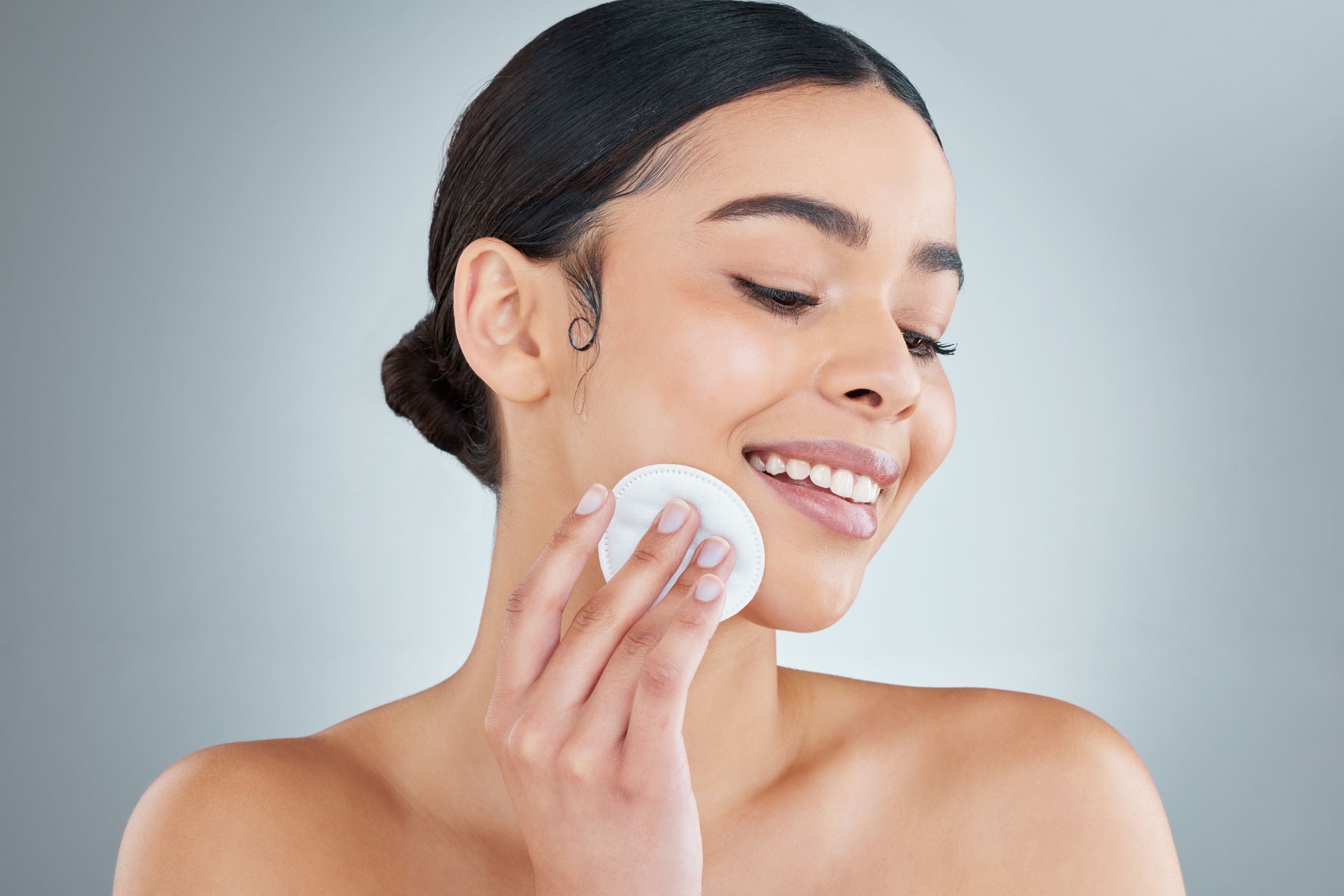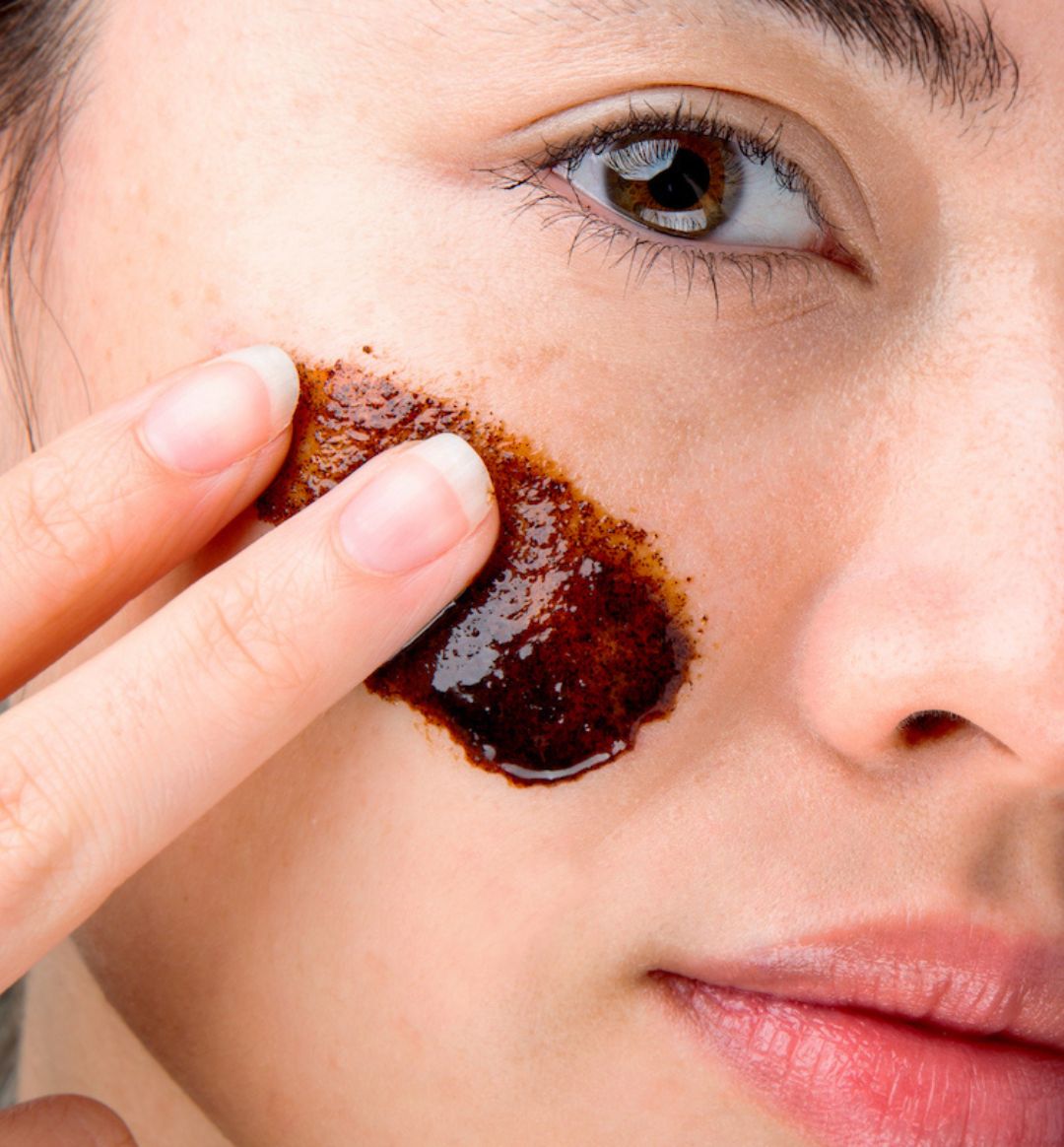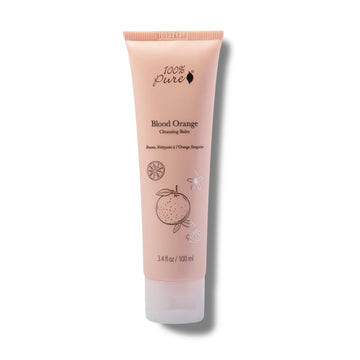Discover how to slough away dead cells without causing damage, irrespective of whether your skin is sensitive, oily, combination, or dry.
Written by: 100% PURE®
Exfoliation stands as a cornerstone in the realm of skincare, offering a transformative path to unveil your skin's natural radiance. By delicately sloughing away dull and lifeless skin cells, exfoliation unveils a refreshed canvas that's receptive to nourishing treatments. In this comprehensive blog post, we delve into the significance of exfoliation, exploring its diverse benefits and potential pitfalls. From discussing various exfoliation methods to unveiling the magic of natural ingredients, this guide equips you with the knowledge to navigate a rejuvenating skin care journey.
Exfoliation, at its core, is the process of removing dead skin cells from the outermost layer of the skin. This natural shedding is a vital aspect of the skin renewal cycle, promoting a youthful and vibrant complexion. As we age, this shedding process becomes less efficient, leading to a buildup of dead cells that can clog pores, create a dull appearance, and hinder the absorption of skincare products.
Exfoliation steps in to address these concerns by gently aiding the skin's exfoliation process, unveiling the fresher, more radiant skin beneath. Regular exfoliation not only refines skin texture but also stimulates cell turnover, promoting collagen production and helping to minimize the appearance of fine lines and wrinkles. While mechanical exfoliation involves physical scrubs, chemical exfoliation utilizes acids or enzymes to dissolve dead skin cells. Integrating exfoliation into your skincare routine, ideally, 2-3 times a week for most skin types, can lead to smoother, clearer skin, enhancing the efficacy of subsequent skincare products.

Understanding your skin type is a crucial step in crafting an effective skincare routine. There are four primary skin types: sensitive, oily, combination, and dry.
Sensitive Skin: This type is prone to irritation, redness, and reactions. It reacts negatively to many products and environmental factors.
Oily Skin: Characterized by excess sebum production, oily skin often appears shiny and is more prone to acne and enlarged pores.
Combination Skin: This skin type features a mix of characteristics. The T-zone (forehead, nose, chin) tends to be oily, while the cheeks may be drier.
Dry Skin: Dry skin lacks moisture, often feeling tight, flaky, or rough. It may be more susceptible to fine lines and wrinkles.
Throughout the day, observe your skin for changes. Oily skin may become shinier as the day progresses, while dry skin might feel even tighter and show dry patches. To determine if you have oily skin, press a blotting paper against different areas of your face. If it picks up oil, you likely have oily skin. Enlarged pores and blemishes can be signs of oily or combination skin.
Sensitive skin is characterized by heightened reactivity to external factors, often resulting in redness, itching, or irritation. It can react negatively to various skincare products, environmental triggers like weather changes or pollution, and even certain fabrics. Individuals with sensitive skin may experience discomfort or a burning sensation when using certain products.
How To Exfoliate: Experience a calming exfoliation with the Lavender Oat Milk Soothing cleanser. Begin by dispensing a small amount of this moisturizing powder cleanser into your palm, then activate it with a touch of water, creating a luxurious foamy lather. Delicately massage the soothing blend of beta glucan-rich colloidal oatmeal, rose petals, lavender, coconut milk, and other botanicals onto your skin using circular motions. Use it daily for the best results.
Oily skin is characterized by an overproduction of sebum, the skin's natural oil. This often leads to a shiny appearance, especially in the T-zone (forehead, nose, chin). Oily skin is prone to enlarged pores, blackheads, and acne breakouts due to excess oil clogging pores. While it can be frustrating, oily skin also tends to age more slowly due to the presence of higher natural oil levels.
How To Exfoliate: Pore Detox Herbal Cleanser enriched with mineral-rich green clay, detoxifying herbs, and nourishing botanicals, works to thoroughly cleanse and minimize the appearance of pores without stripping or dehydrating your skin. Dispense a small amount of the powder cleanser into your palm, activate it with water to create a foamy lather, massage it onto the skin in circular motions, focusing on oily and pore-prone areas, then rinse thoroughly.
Newsletter Subscribe
for more blog updates and exclusive discounts

Combination skin exhibits a unique duality, with different areas of the face manifesting distinct traits. Typically, the T-zone is oilier, prone to shine, and potential blemishes, while the cheeks may be drier or more sensitive. This contrast can make skincare challenging, requiring a balanced approach that addresses both oily and dry areas.
How To Exfoliate: Use Acai Pulp Facial Scrub, an exfoliator that is rich in antioxidants. Focus on the T-zone and adjust frequency based on individual areas. Apply a thick layer onto clean skin and leave on for 20 minutes to receive intense nourishment. Then rinse it with warm water.
Dry skin is characterized by a lack of moisture and natural oils, often leading to a tight, uncomfortable sensation. It may appear dull, flaky, or rough, and is more prone to fine lines and a lack of elasticity. Dry skin can be particularly sensitive to harsh weather conditions and requires regular hydration and gentle care to maintain its natural barrier and achieve a healthier, more radiant complexion.
How To Exfoliate: For optimal exfoliation of dry skin, go for Blood Orange Cleansing Balm, a gentle exfoliant that offers intense hydration, leaving your skin supple and revitalized. Take a dime size amount and emulsify it in your hands. The heat will melt the scrub then apply it directly onto your face and neck. Wash with water after gently exfoliating for a few minutes and complement with a nourishing, emollient-rich moisturizer.
How often should I exfoliate my skin?
The frequency of exfoliation depends on your skin type and the exfoliation method you're using. For most skin types, exfoliating 2-3 times a week is sufficient. However, sensitive skin may benefit from exfoliating less often, while oily or thicker skin may tolerate more frequent exfoliation.
Can over-exfoliation damage my skin?
Yes, over-exfoliation can lead to skin irritation, redness, dryness, and even long-term damage to the skin's protective barrier. It can strip away essential oils, disrupt the skin's pH balance, and make it more susceptible to environmental stressors. It's crucial to follow the recommended exfoliation frequency and listen to your skin's signals to avoid over-exfoliation.
Are there any natural ingredients I can use for exfoliation?
Yes, you can utilize natural exfoliants such as sugar, salt, oatmeal, fruit enzymes (pineapple, papaya, kiwi), and clay (kaolin, bentonite) to gently remove dead skin cells and promote a refreshed complexion. Remember to conduct a patch test to ensure compatibility with your skin.
Can I exfoliate if I have acne-prone skin?
Yes, exfoliation can be beneficial for acne-prone skin, but it needs to be approached carefully. Chemical exfoliants like salicylic acid or glycolic acid can help unclog pores and reduce acne. This is why it is best to go with products that have natural exfoliants.
How soon will I see results from exfoliating?
In general, you might notice some immediate effects like smoother skin, improved texture, and a radiant complexion after exfoliating. However, for more significant improvements in issues like uneven tone, fine lines, or acne, it might take several weeks of consistent exfoliation to see noticeable changes.
In the journey towards radiant and healthier skin, exfoliation emerges as an indispensable ally. By gently shedding dull and lifeless cells, exfoliation reveals a canvas primed for nourishment and rejuvenation. As we've explored various exfoliation techniques tailored to different skin types, it's clear that customization is key. Embrace the power of exfoliation, but remember that each skin type is unique. Listen to your skin's cues, observe its responses, and adapt these techniques to align with your skin's individual needs. With this personalized approach, you'll unlock the true potential of exfoliation, unveiling a complexion that radiates vitality and beauty. Your skin, like you, is one of a kind – and your exfoliation routine should reflect that.
- Tags: August-2023, Skin Care, skincare
We carefully hand-select products based on strict purity standards, and only recommend products we feel meet this criteria. 100% PURE™ may earn a small commission for products purchased through affiliate links.
The information in this article is for educational use, and not intended to substitute professional medical advice, diagnosis, or treatment and should not be used as such.






